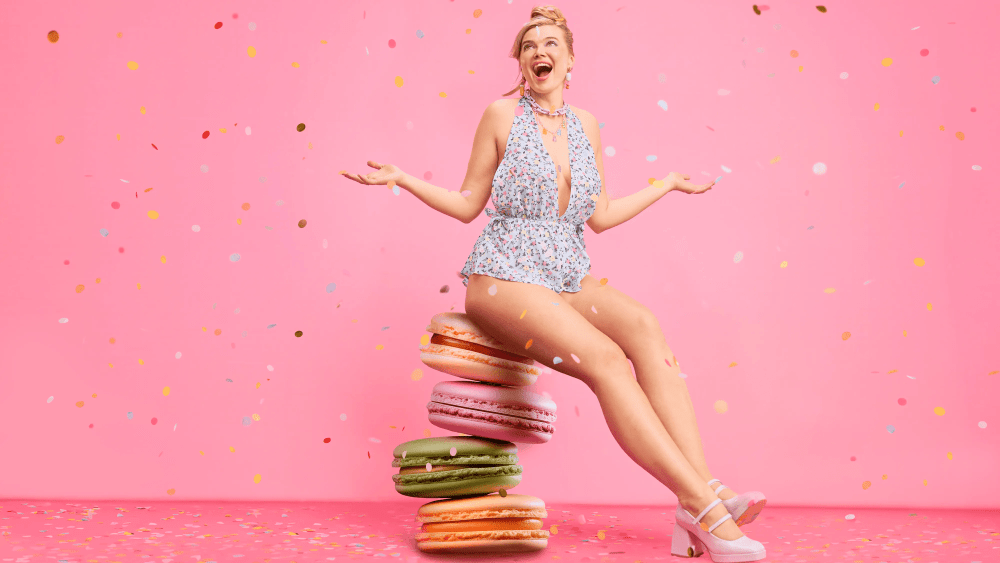On the cringe spectrum, bras and panties often land near jeans and bathing suits for the least-fun try-on experience. But intimate apparel is one area where technology could make the e-commerce experience even better than real-world dressing rooms.
At least that’s what Adore Me is banking on, as the inclusive lingerie brand brings virtual try-ons to its entire product catalog.
Developed by Paris-based tech partner Veesual, which specializes in visually augmented shopping for fashion, the feature digitally places images of products on photos of human models so customers can see how various styles look on figures that resemble them. The shopper chooses a model and then clicks through their product picks to dress her in different looks.
Adore Me and Veesual aren’t starting from scratch. They’re building out a program that began in September with an early test for less than 10 percent of the brand’s customer base across a limited set of products.
The results have been very encouraging, Ranjan Roy, Adore Me’s senior vice president of strategy, told WWD — enough to begin rolling the feature out across brand’s entire range.
“We saw 14 percent uplift relative to product page visits in conversion rate,” he said, and a 48 percent jump in conversions, compared to category page visits.
“Normally, if a customer has already gotten to a product page, they’re more interested, so it’s always going to have a higher conversion rate,” said Roy. “But the visual experience lives somewhere between a product and a category page. In our mind, it’s this whole new element versus the standard journey.”
A peek at the virtual try-on tool.
Courtesy
As a grown-up twist on the dress-up game, its a feature asks site visitors to take action — in essence, to play with the tool. So far, shoppers are doing just that, spending 2.3 times longer on product pages with Veesual’s tech compared with regular sessions.
Adore Me isn’t alone. Fashion brands of all kinds are exploring virtual try-ons of all kinds.
The approach is distinct from the type often used for beauty, eyewear, bags and shoes. That usually involves selfie cameras and augmented reality. But AR apparel try-ons are more complicated, squaring soft, fluid fabrics with physics, gravity and changing shapes on various body types.
The tech is evolving, but brands aren’t waiting for it to fully bake — not when there’s a compelling alternative with digital fit doppelgängers, which are more sophisticated and faster to develop, thanks to breakthroughs in artificial intelligence. That explains why Fashion brands, retailers and tech platforms like Google are flocking to it.
AR may not be a match for the intimates business anyway. The idea of entirely disrobing in front of a camera would surely be a dealbreaker for many consumers. Instead, the fashion model analogue looks better suited — and the bonus, at least for those people, is that Adore Me’s virtual dressing room can spare them the horrors of the real world’s dressing rooms.
Generative AI, in the hands of experts like Veesual, also makes the latter easier than ever to integrate, since the tech can swiftly adapt product visuals to each fashion model. It’s not a fully automated system, however, since Adore Me still validates every image. But this feedback loop improves the system, improving its ability to generate high quality, appropriate and realistic visuals.
“We see definite economies of scale, in terms of how efficient and effective this will get as we scale across more products,” said Roy.
Ultimately, this type of try-on doesn’t hinge on efficiency or even attractive imagery. It’s about trust. Customers have to believe the visuals, enough to feel they have a reasonable expectation of how the physical product will look once it arrives. A proper sense of fit matters, especially for a brand known for extended sizing, making accuracy especially crucial.
If the images fail on that front, it’s obvious because the product return rate would spike. That hasn’t happened, according to Adore Me.
For Roy, another way of instilling trust is to rely on familiar spokesmodels, like KhrystyAna from “America’s Next Top Model.”

KhrystyAna, best known for “America’s Top Model,” is an Adore Me model and one of the first featured in its virtual try-on tool.
Courtesy
“It was so important that customers see the same models that they see on the website. With a third-party tool like Google, they have their own initial set of models,” said Roy. Customers can try any other brand’s clothing on them, so the experience feels more generic. “In our case, it’s like a logical continuation of the website and the brand, versus something that’s more of a pure tech tool.”
The range of models is limited for now, beginning with just four people, but adding more to represent a wider range of demographics and body types is a priority, he added.
It’s as important as expanding the product range, he said, “because we were seeing over half of customers actually chose a different model. That was a huge validation point for us, because it meant that they actually wanted to find someone who reflects them more.”

